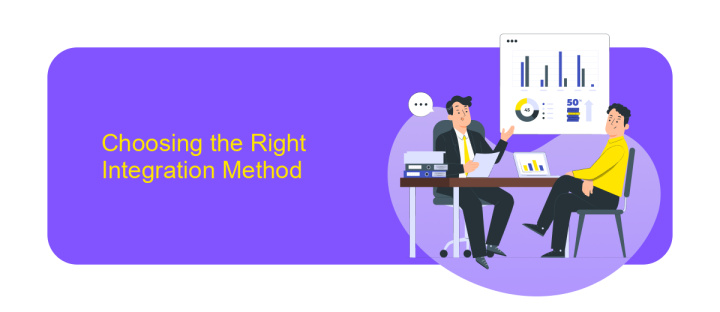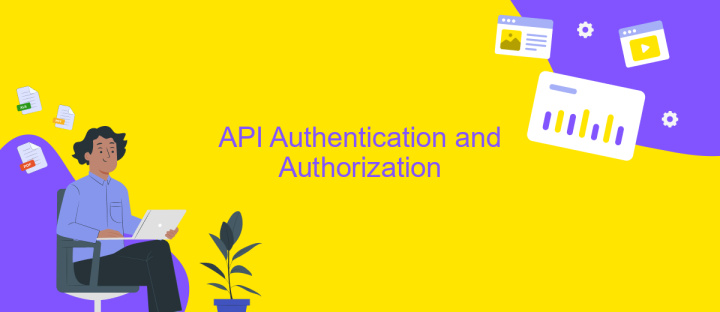API to API Integration
In today's interconnected digital landscape, API to API integration has become essential for seamless communication between diverse software systems. By enabling applications to exchange data and functionality, these integrations enhance operational efficiency and unlock new possibilities for innovation. This article explores the fundamentals of API to API integration, highlighting its benefits, challenges, and best practices for successful implementation in various industries.
Understanding API Integration Fundamentals
API integration is a crucial aspect of modern software development, enabling different systems to communicate and share data seamlessly. Understanding the fundamentals of API integration involves grasping how APIs serve as intermediaries that allow applications to interact with each other, regardless of their underlying technologies. This interaction is essential for creating cohesive digital ecosystems where data flows smoothly between various services and platforms.
- Endpoints: These are specific paths through which APIs receive requests and send responses.
- Authentication: Ensures that only authorized users or systems can access the API.
- Data Formats: Common formats like JSON and XML are used to structure data exchanged between APIs.
- Rate Limiting: Controls the number of requests a client can make to an API within a given timeframe.
- Error Handling: Mechanisms to manage and report errors that occur during API interactions.
By mastering these core components, developers can effectively design and implement API integrations that enhance functionality and improve user experiences. A solid understanding of these fundamentals ensures that APIs are leveraged to their fullest potential, fostering innovation and efficiency across digital solutions.
Choosing the Right Integration Method

When selecting the optimal integration method for API to API connections, it's crucial to consider the specific requirements of your project. Evaluate the complexity of the integration, the data formats involved, and the level of real-time interaction needed. For simpler integrations, a direct API call might suffice, allowing for straightforward data exchange. However, for more complex scenarios, such as those requiring data transformation or orchestration, a middleware solution could be more appropriate. This ensures that data is processed and routed efficiently between systems.
Moreover, leveraging integration platforms like ApiX-Drive can significantly streamline the process. These platforms offer pre-built connectors and an intuitive interface, reducing the need for extensive coding and manual configuration. ApiX-Drive, for instance, provides a user-friendly environment that supports a wide range of applications, enabling seamless API integration without deep technical expertise. By using such services, businesses can focus on their core operations while ensuring reliable and scalable integrations. Ultimately, the right method depends on balancing technical capabilities with business goals to achieve efficient and cost-effective integration.
API Authentication and Authorization

API authentication and authorization are crucial components in securing data exchange between systems. Authentication verifies the identity of a user or system, ensuring that the entity requesting access is legitimate. Common methods include API keys, OAuth tokens, and JWTs (JSON Web Tokens). These mechanisms help establish trust by confirming that the requesting party is who they claim to be. Authorization, on the other hand, determines what an authenticated entity is allowed to do, controlling access to resources based on predefined permissions.
- API Keys: Simple and efficient, API keys are strings passed in requests to identify the calling program or user.
- OAuth: A more secure method, OAuth allows users to grant third-party applications access to their information without revealing passwords.
- JWTs: These tokens provide a compact and self-contained way to transmit information securely between parties as a JSON object.
Implementing robust authentication and authorization mechanisms is vital for protecting sensitive data and ensuring that only authorized entities can access specific resources. By choosing the appropriate method, organizations can enhance security, maintain data integrity, and provide a seamless user experience. Regularly updating and reviewing these systems is also essential to address emerging security threats and vulnerabilities.
Handling API Errors and Rate Limiting

When integrating APIs, handling errors effectively is crucial to maintain seamless communication between systems. APIs may return various error codes, such as 400 for bad requests or 500 for server errors. It is essential to implement error-handling mechanisms that can identify these codes and respond appropriately. This might involve logging the error, retrying the request, or alerting the user.
Rate limiting is another critical aspect of API integration. It involves controlling the number of API requests a client can make within a specific timeframe. This prevents server overload and ensures fair usage among all clients. Exceeding the rate limit can result in temporary bans or throttling.
- Monitor API responses for error codes and handle them accordingly.
- Implement exponential backoff strategies for retrying failed requests.
- Respect rate limits by checking headers for limit and remaining requests.
- Use caching to reduce unnecessary API calls and save resources.
By effectively managing API errors and respecting rate limits, you ensure a robust and reliable integration. This not only improves user experience but also maintains the integrity and performance of both the client and server systems involved.
Implementing and Testing the Integration
Implementing an API to API integration requires a clear understanding of the endpoints and data flow between the systems. Begin by defining the specific data exchange requirements and ensure both APIs are compatible. Utilize tools like ApiX-Drive to streamline the setup process. ApiX-Drive offers a user-friendly interface that simplifies the connection of various APIs without extensive coding, making it an ideal choice for those who want to focus on the integration logic rather than technical complexities.
Once the integration is configured, rigorous testing is crucial to ensure data is accurately transmitted and received. Create test cases that mimic real-world scenarios to evaluate the integration's reliability and performance. Monitor the data flow and check for any discrepancies or errors. ApiX-Drive provides robust testing features that allow you to simulate data exchanges and identify potential issues before going live. This approach ensures a seamless integration process, minimizing disruptions and maximizing efficiency.
FAQ
What is API to API integration?
Why is API integration important?
What are the common challenges in API integration?
How can I simplify the process of API integration?
What should I consider when choosing an API integration platform?
Apix-Drive will help optimize business processes, save you from a lot of routine tasks and unnecessary costs for automation, attracting additional specialists. Try setting up a free test connection with ApiX-Drive and see for yourself. Now you have to think about where to invest the freed time and money!

